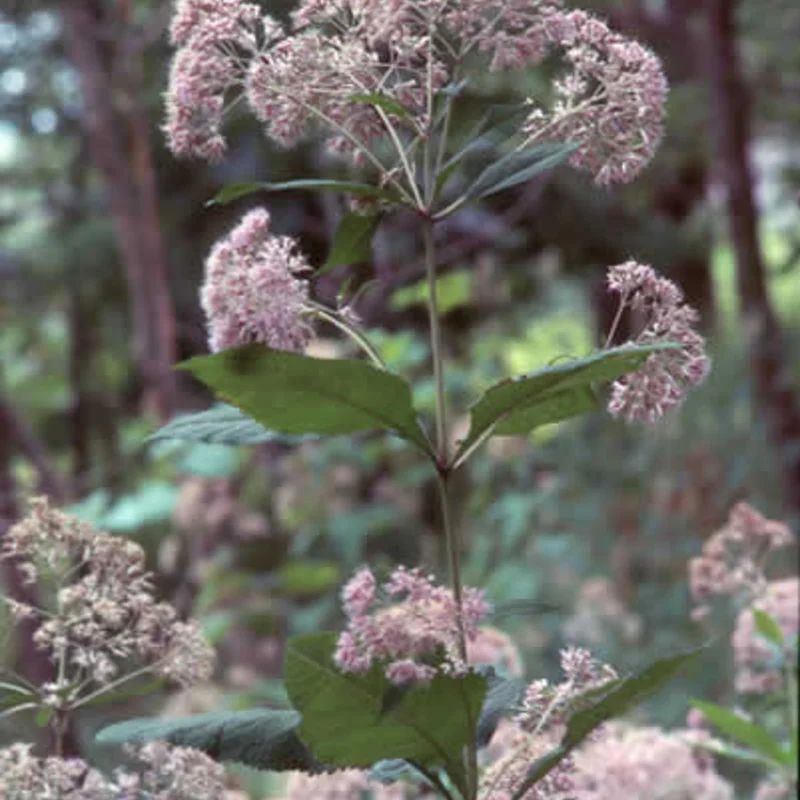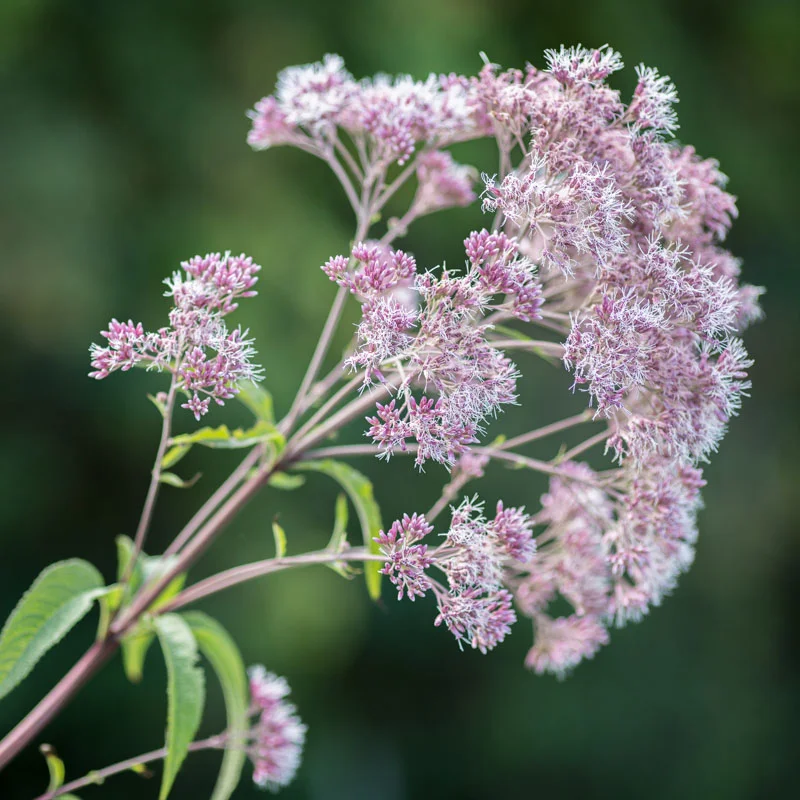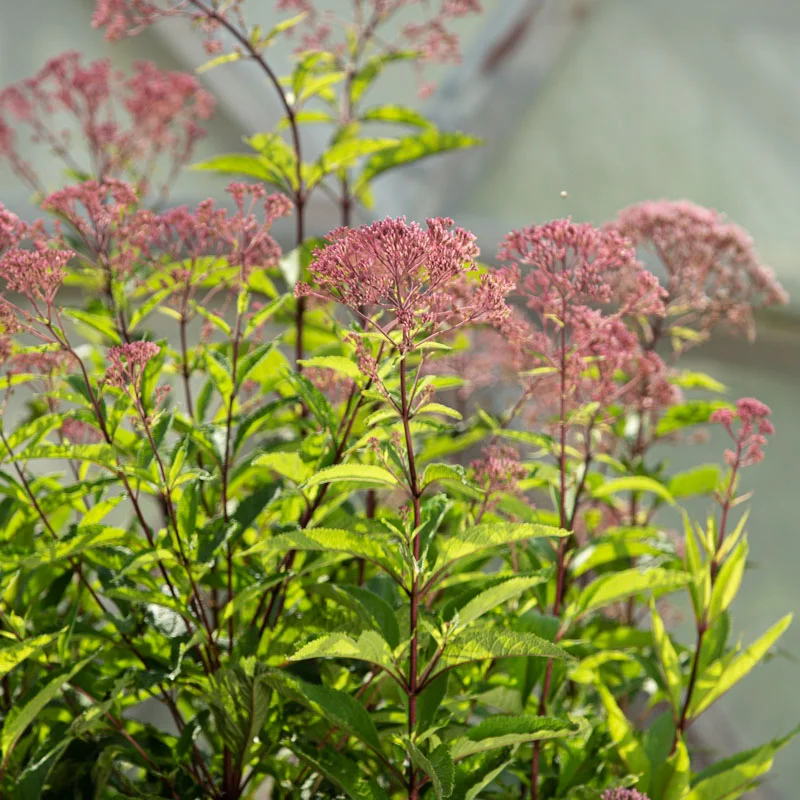Eupatorium purpureum
This perennial species grows to over 2 m in height and produces upright, branched stems bearing umbels of pink tubular flowers from July to September.
Its presence is a good indicator of soil moisture.
These products may also be of interest to you
in bucket, in the ground
Perennial seeds require a wintering period for germination. Place them in the refrigerator for 60 days before sowing in spring. Sow in trays, making sure the seeds are lightly covered. When plants have 5-6 leaves, transplant into individual pots or directly into warmed soil, 1 m apart in all directions. Autumn sowing is done in the same way and left outdoors until spring.
January, February, March, April, May, October, November, December
July, August, September
in the ground
semi-shade, shadow
fort
clayey, limestone
wet, rich
Eupatorium purpureum
mid-season
100 seeds
Pink
From 150 to 200 cm
elongated
North America
The root of the purple eupatorium, Eupatorium purpureum, was traditionally used by native North American peoples as a diaphoretic to promote perspiration and reduce fevers. The whole plant, but particularly the root, offers astringent, diuretic, nervine and tonic properties. Particularly valuable as a diuretic and stimulant, it is used in particular to treat kidney and urinary stones. Due to the presence of pyrrolizidine alkaloids, it can cause hepatotoxicity and should be avoided by people with liver disease. Its use is also contraindicated during pregnancy and breast-feeding.














